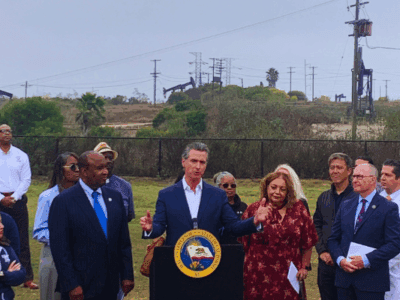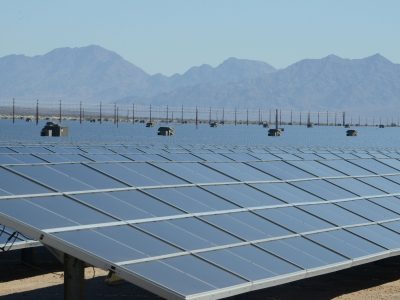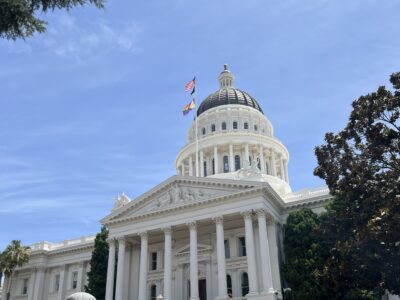Full Speed Ahead? Biden Administration Set to Release New CAFE Standards
As E&E News reported today, the Biden administration is expected to announce tomorrow new fuel economy and tailpipe emissions standards for light-duty vehicles model years (MY) 2023 through 2026. The move is long-awaited; one of the Biden administration’s first actions was to direct EPA and NHTSA by executive order to revise the Trump era version of these rules by July of this year. The release of this proposal will miss that deadline by about a week, but the joint rulemaking process can still be concluded in time to impact MY2023 vehicles.
With transportation now the country’s largest source of climate-warming emissions, vehicle pollution rules are one of the most significant federal climate policies. This rulemaking will be the latest event in a long and complex series of administrative actions spanning from the Obama administration until now. A brief recap of the saga to date:
– About a decade ago, the Obama administration brokered a deal between automakers, California, and the federal government to set fuel economy and tailpipe emissions standards that would be applicable nationwide. Those standards, which my UCLA Law colleague-turned Chief Counsel of NHTSA, Ann Carlson, wrote about in 2011, were designed to have cars hitting an average fuel economy of 54.5 mpg by 2025.
– In 2018, EPA and NHTSA released a joint proposal to freeze the Obama-era fuel economy standards and to revoke California’s waiver for portions of its Advanced Clean Cars (ACC) Program that set tailpipe GHG emissions standards and mandated that a percentage of automakers’ sales in California had to be electric vehicle sales. The proposed waiver revocation was unprecedented in EPA’s then nearly 50-year history, and the proposed standards freeze was riddled with inaccuracies and contradictory logic. Over the next year, the rule remained in development, and when it became clear that the technical aspects of the standards-setting were delaying release of the entire rule, the federal agencies bifurcated the process.
– In September 2019 the agencies released SAFE Part 1, a joint rulemaking wherein NHTSA made a determination that state tailpipe GHG emissions standards and ZEV mandates, and particularly California’s regulations, are preempted by the federal Energy Policy and Conservation Act (EPCA) and EPA, relying in part on NHTSA’s preemption determination, revoked California’s waiver for portions of its ACC Program.
– SAFE Part 1 was challenged by a bevy of states—California and a number of states who follow, or have expressed intent to follow, California’s standards pursuant to Section 177 of the Clean Air Act—and environmental groups, while some automakers and industry groups joined the fray on the side of the federal government. A total of ten lawsuits ended up as a consolidated action in the D.C. Circuit, which has now been held in abeyance.
– In the midst of all this regulatory uncertainty, a group of automakers representing about one-third of the U.S. market signed a deal in July 2019 with California to acknowledge its authority to regulate in this space and to adhere to a modified set of tailpipe GHG and ZEV standards.
– In March 2020, EPA and NHTSA finally released SAFE Part 2, setting new federal fuel economy and tailpipe GHG emissions standards for light-duty cars and trucks model years 2021-2026.
– In January 2021, the Biden administration directed EPA and NHTSA to review SAFE Part 1 and SAFE Part 2, and to release proposed rules “suspending, revising, or rescinding” those actions by April 2021 and July 2021 respectively. NHTSA’s CAFE Preemption Rule and EPA’s reconsideration notice, issued in April, dealt with SAFE Part 1, rescinding NHTSA’s preemption determination and reconsidering EPA’s waiver revocation. The waiver withdrawal reconsideration is still pending, and a determination could come later this year. The new standards to be released this week will represent the agencies’ revision of SAFE Part 2.
The agencies’ proposal hasn’t been published yet, but sources have reported that in the lead-up to 2025, the standards will track those set by the 2019 California framework agreement with automakers, requiring a roughly 3.7% reduction in GHG emissions year over year. By MY2025, the standards are expected to return to the Obama-era requirement of a 5% annual emissions reduction, and MY2026 standards may require an even greater annual reduction than that.
This approach isn’t particularly surprising: The agencies are under time pressure to get standards on the books that will take effect in time to impact MY2023 cars, and the California framework agreement represents a compromise with buy-in from the auto industry that should be well-supported by an administrative record given all the legwork California did to get the agreements in place. That may reduce pushback against the proposal (although given the amount of litigation these standards have generated since the Obama years, that’s probably wishful thinking), but at the very least, it should put the agencies in a good position to counter an industry argument that the proposal is “arbitrary and capricious.” Industry players will have a couple of years to readjust to more aggressive standards. And the administration is expected to announce other EV mandates that are meant to work in tandem with this proposal to meet stated climate targets.
But there has already been criticism that the proposal will not go far enough. Ground was lost during the Trump years, and the administration needs to play catch up to account for those losses. And the devil’s in the details: A closer read of the proposal, once it’s published, should give a sense of the compliance flexibilities the administration has built into the rule and the real emissions reductions that can be expected to result. For example, both the California framework agreement and past standards (during both the Trump and Obama years) allowed automakers to receive compliance burden-easing credits based on EV sales. How that might work in this proposal—particularly in tandem with any EV mandate the Biden administration is considering—will be one of many interesting wrinkles to watch.







Reader Comments